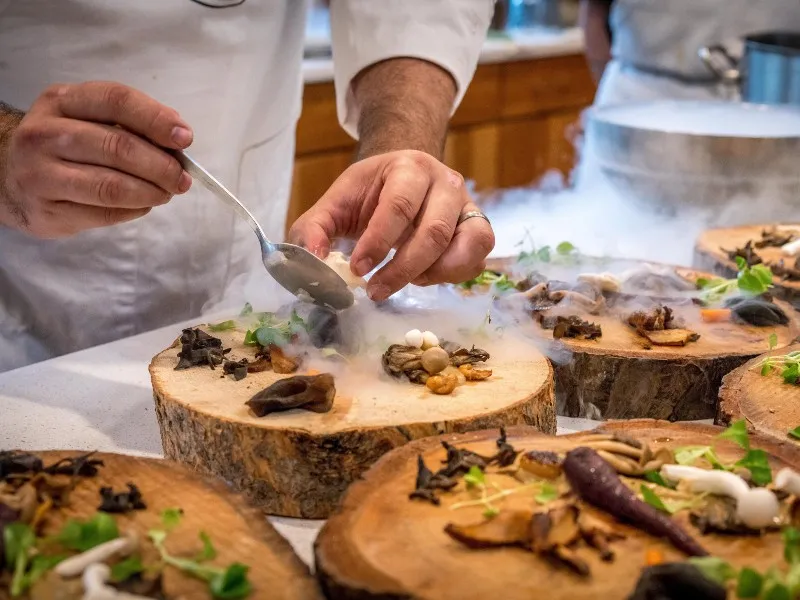Flavour of the future: enhanced, modified and sustainable food

As lovers of both food and science, Scientell recently attended the last lecture of the Food for Thought speakers series, convened by the Australian Academy of Science.
Speaking on the Future of Food and Nutrition, Dr Taiwo Akanbi (Lecturer in Food Science, University of Newcastle) and Dr Flavia Fayet-Moore (CEO, Nutrition Research Australia) discussed emerging trends in food science, nutrition and production.
So what do they think the food of the future will look like? In summary, they say it is likely to be enhanced, modified, personalised, sustainable, re-purposed and equitable.
Global population is projected to pass 9 billion by 2050. As a result, our food will need to be high quality while increasing in quantity, but also sustainable. Balancing quality, quantity and sustainability will be a key challenge for food science, nutrition and production in the future.
Already there is increasing demand for foods that benefit health and well-being, and this trend is expected to continue. This means that our foods are likely to be increasingly plant-based and enhanced or modified to increase health benefits, primarily through natural processes (such as enzymes and natural compounds).
A quick stroll through most major supermarkets in Australia highlights that plant-based alternative proteins are already gaining popularity. But what about more sustainable forms of animal protein? As well as the more widely accepted kangaroo, keep an eye out in the meat aisle of the future for sustainable animal proteins such as insects and lab-grown meat–both projected to become a prominent feature of our future diet.
New technologies are already being developed to enhance the health benefits of our foods (such as wine with additional antioxidants) and to increase their shelf life. For example, edible coatings made from plant extracts are being developed to extend the life of fruit and vegetables, such as mangos and bananas. These coatings allow access to fresh foods by those in remote locations and help to reduce food waste, especially for fruit and vegetables that are experiencing a glut in the market.
Managing food waste will continue to be a challenge. Again, new technologies are already being developed to re-purpose food waste to enhance or preserve foods. This will be an important part of the future food processing chain. An example is using mushroom waste as a flavour enhancer.
But it’s not just our food that is predicted to be different. Food processing and delivery are also expected to change. We are already seeing evidence of this, with the introduction of drone-delivered food, 3D printed foods and robotic kitchens.
And what about the role of genetics in our future foods? Will we be eating food according to personalised plans based on our genetic make-up? Will we be able to modify common allergic foods to remove the allergens (think peanuts without the anaphylactic allergens)? These may be future options.
But while these predictions of what our future foods may look like are fascinating, sustainable and potentially delicious, they come with a warning. Dr Flavia Fayet-Moore notes we need to ensure modifications and enhancements to our food and food processes are based on rigorous scientific evidence. She also adds that we need to remember the importance of social connections to foods. ‘I think that it’s really, really important that we remember the social connection we have with a meal. That social connection when we taste a parent or grandparents’ recipe, that’s all part of being healthy and we can’t forget that as we move into the future,’ says Dr Fayet-Moore.
You can watch a recording of the Future of Food and Nutrition lecture, and the other lectures in the Food for Thought series, on the Australian Academy of Science website.
Author:
Date Posted:
December 20, 2021
